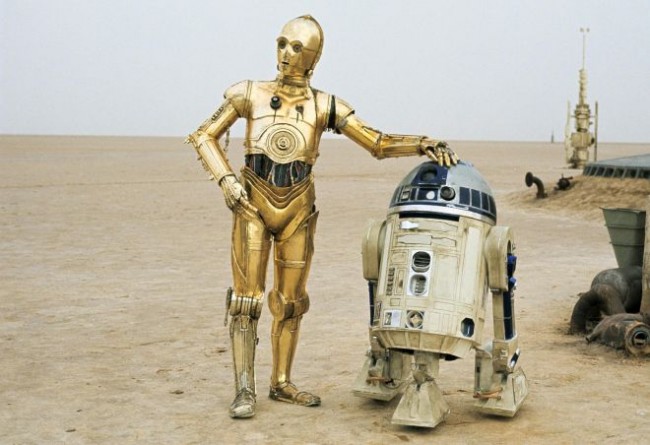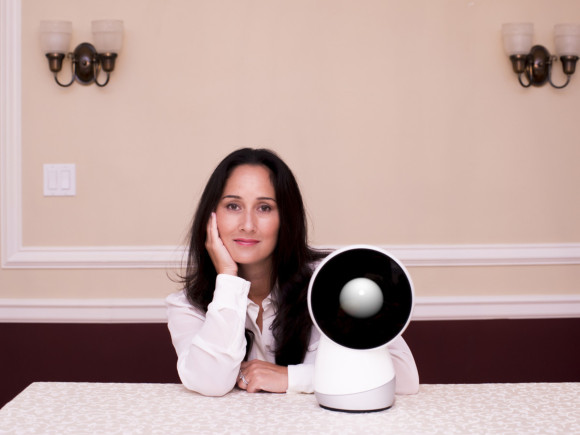Aug 6, 2018
Cynthia Breazeal Asks: Where Are the Robots for the Rest of Us?
Have you ever wondered why we don’t have personal robots? We can send robots into space, have them manufacture cars, and serve drinks in Las Vegas, but what about one for the home? Sure they can put together a mean Tesla and analyze core samples from a distant planet, but what about washing our laundry, cooking some frittatas, or making us a nice hot cup of organic, free-trade coffee? You know, the really useful stuff?
And while we’re at it, why can’t these robots be fun and tell us the insane probability of getting a date with a supermodel or reel off a few jokes about the priest, the rabbi, and the duck when we’re having a bad day? Where were the robots we were promised by Star Wars? Where’s our personal C3PO?
If this kind of question has been keeping you up all night, you’re not alone. It’s also the same question that bothered social robot pioneer and keynote speaker Cynthia Breazeal. When she was a bright-eyed graduate student at M.I.T., she saw how robots were being sent into fiery volcanoes, down deep into the depths of the ocean, and onto the red dirt of Mars and wondered why aren’t these robots interacting with humans? Where were our robot companion sidekicks? How could robots help us be better humans?
Then Cynthia had her epiphany—interacting with inanimate objects and interacting with a living, thinking being were two entirely different paradigms. Energized, she marched into her advisor’s office and declared she had to change everything about her entire Ph.D. research. And so began her journey into the world of social robotics.
What is social robotics? And can you trust robots?
You probably have heard of machine learning, digital voice assistants, and industrial robots (more on that below), but social robotics isn’t about playing chess, commanding Alexa to order a Hawaiian pizza, or building an iPhone in a vacuum-sealed room. It’s about interacting socially—with mechanical devices.
Cynthia is on the forefront of the emerging field of social robotics. As director of the Personal Robots Group at MIT, she studies how we can live better with robots. Her research has focused on how these socially trained robots can help us maintain weight loss, learn Spanish, and teach us about human behavior. For example, how does trust work? And did you know that you could trust a robot?
Cynthia’s research has shown when we interact with a machine that can physically move in some way, we feel more comfortable, we get more out of the experience, and we even come to trust and like the robot. This kind of information shows us how much physical behavior is important for building trust as well as showing us how we can get more out of computers when they are anthropomorphized.
The humanoid robots of Star War are not here yet. We still have a long way to go until they serve as our wingmen in bars. While great strides have been made in terms of mobility and dexterity, other technical limitations remain in terms of weight and battery life. The Atlas “backflip” robot you may have seen jumping around on YouTube, billed as the “The World’s Most Dynamic Humanoid” can carry only 25 pounds and run for an hour or so. Definitely not ready for an all-night rave or taking on the death star. And that robot can’t even interact with humans in a social way either. So you know it’ll never buy the first round.
Right now we only have the beginnings of socialization as realized by Cynthia’s startup robot: Jibo. Jibo is “The World’s First Social Robot for the Home.” The robot doesn’t have legs or wheels, and can’t bring you a cup of coffee yet, but Jibo has face and voice recognition technology and will notice when you come into a room. Unlike Alexa, Jibo isn’t tied into a database, so the experience interacting with Jibo is more human-like than talking to a digital voice assistant.
While droids aren’t slinging out sarcastic comebacks yet, the rise of personal robots is on its way. Until then, we’ll just have to be satisfied with machine learning, digital voice assistants, and industrial robots. To learn more about those topics, read below.
Machine Learning
The best computers can learn to become better in a certain defined field. Keynote speaker Andrew McAfee has shown us how we are entering a second machine age with computers beating humans at games like Chess, Go, and Jeopardy. Likewise, algorithms can help us better trade, sell products on Amazon, find a date, and choose movies on Netflix, according to marketing expert and neuroscientist Carmen Simon.
Digital Voice Assistants
We are all familiar with digital voice assistants. Who has not said, “Hey Siri,” “Hey Google,” or “Hey Alexa?” These voice assistants not only help us with rote tasks, like setting alarms, choosing awesome playlists, and reordering diapers, they also entertain us with their limitations in countless internet memes. A.I. pioneer and Siri inventor Adam Cheyer has predicted digital voice assistants are going to be the new way we interact with computers. And keynote speaker and innovator Tan Le’s Emotiv brainwear will have us interacting with computers and technology just through our brainwaves alone. Just watch as this quadriplegic man in Brazil can drive a formula car with thoughts alone.
Industrial Robots
Industrial robots are the machines saving us from the drudgery of assembly line work. They can tirelessly repeat repetitive tasks without the need for rest or mandated coffee breaks. Perennial disruptive innovator, TED talk regular, and keynote speaker Kevin Surace has shown industrial robots are going to continue doing away with manufacturing jobs and rote tasks in the future, freeing us to do more engaging tasks.
Kyle Crocco is the Content Marketing Coordinator at BigSpeak Speakers Bureau, a graduate of UC Santa Barbara, and the lead singer of Duh Professors. He regularly publishes business book reviews and thought articles on Medium, Business 2 Community, and Born 2 Invest.
Speaker
Tags

 Cynthia Breazeal
Cynthia Breazeal